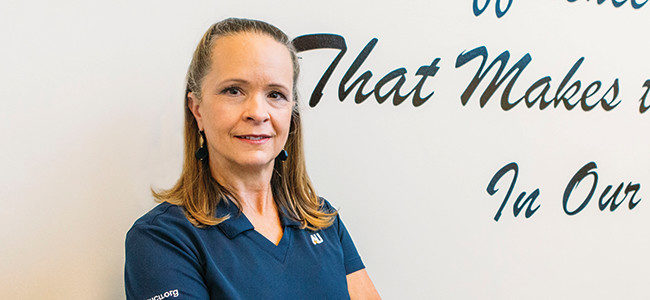
Her Mission: Getting Out the CU Message
'We need to do a better job communicating the CU difference.'
MICHELLE THORNE never thought she’d lead a credit union, but she stepped up to take over as president/CEO of the $171 million asset American United Family of Credit Unions, West Jordan, Utah, when the previous president/CEO unexpectedly passed away last year.
Thorne says she’s motivated to come to work everyday “to help keep this organization viable well into the future for the most influential people in my professional career—the credit union’s employees and members.”
Stephanie Braun, the credit union’s executive administrative assistant, says Thorne “knows she has a great team and she loves to hear our opinions and ideas. She has been a great mentor to staff and has taught us about true leadership. As a result, morale at our credit union has improved tenfold. She brought to the job a fresh new perspective and she believes in teamwork.”
“In my position, it’s my responsibility to help our employees help our members by providing the resources, training, and strategic direction for the credit union,” Thorne says.
Thorne, who earned a B.S. in marketing in 1996 and an MBA in 1999 from the University of Utah, was working for the university’s business school when she was asked to undertake a marketing and data mining study for the credit union 13 years ago. She moved from being a consultant to manager of marketing and lending. Then, in 2006, she became vice president of marketing, lending, and human resources. After the credit union reorganized in 2011, she became the head of operations until moving into the president/ CEO role.
She looks forward to continuing in that position as the credit union moves into the future.
“More than leaving the credit union in a better place, I want to make sure that we’ve done a better job in getting our message out about credit unions,” Thorne says.
“Like everyone else, I believe in the credit union movement,” she continues. “I cringe when young people talk about banks and credit unions as if they’re one in the same. We need to do a better job communicating the difference—that not only can we do what a bank can do, but we do it better. And instead of the excess going to stockholders, it’s returned to our members.”